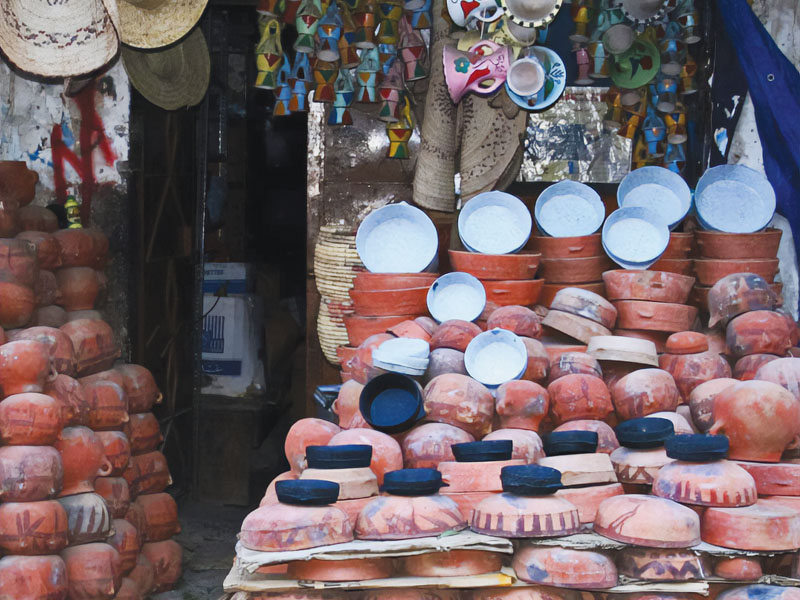Pottery Craft in Yemen
Issue 48

Mohammed Saba’ – Yemen
Every country has its own traditional arts and crafts that reflect the cultural life of its people, both ancient and modern. Traditional crafts products are as important as physical monuments housed by museums.
Pottery is one of the industries that often preserves its original forms, and therefore can reflect, to researchers, ancient aspects of culture in new products. Through pottery pieces archaeologists study different aspects of social life and economic status of a society.
Pottery has been used to make utensils for food and drink, for storage and in many cases for ornamentation. The craft uses principles of chemistry to deal with raw materials, and to shape the items according to its aesthetic and instrumental objectives.
Traditional arts and crafts often benefit from the raw materials available in the surrounding environment. Pottery is made of the clay available in the environment and in Yemen we find very good quality clay to produce the finest pottery. The Yemenis discovered pottery early, and archaeologists in Yemen say that the remains of pottery found in sites date back to the Neolithic era; the remains of widespread scattered pottery indicate heavy use of pottery in Yemen in the past.
Today the pottery industry is still present in many Yemeni governorates. The survival of the pottery craft in Yemen, to some extent, may be due to the vital need for the use of pottery up until now.
Many Yemenis prefer to eat in traditional pottery, which keeps the craft flourishing. There are also some other factors that help in keeping the pottery craft alive, such as the cost of production and the fact that it is affordable to the majority of people.
Pottery products in Yemen vary according to the variety of clay used, and the climate and raw materials in the local environment.
Despite the factors that keep the pottery industry alive, the local pottery products in Yemen are now declining. Imported alternatives have forced artisans to quit their craft. Nowadays people prefer to use tools made of other materials (e.g. aluminum, plastic and metals).
These changes put this craft at risk of extinction like many other crafts whose products are no longer in demand in the local markets. This was seen in the industries of copper, marble and glass products, which were manufactured in Yemen until recently.
It is crucial that we study the pottery craft and its history and provide the needed documentation to help highlight its status in our present time.







































































